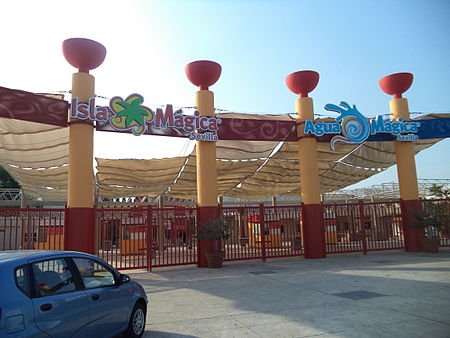Isla Mágica
1997 establishments in SpainAmusement parks in SpainAmusement parks opened in 1997Buildings and structures in SevilleOperating amusement parks ... and 3 more
Seville Expo '92Tourist attractions in SevilleWorld's fair sites in Seville

Isla Mágica (Spanish pronunciation: [ˈizla ˈmaxika], Magic Island) is a theme park in Seville, Spain. The park was constructed on the former grounds of the Expo '92 World's Fair in Seville and opened in 1997. It features a large lake and many other attractions including roller coasters and various other types of rides as well as both live and cinematic shows. The park's slogan is "Diversión sin límites" which translates as "Fun without Limits".
Excerpt from the Wikipedia article Isla Mágica (License: CC BY-SA 3.0, Authors, Images).Isla Mágica
Calle Enríquez de Ribera, Seville Triana
Geographical coordinates (GPS) Address Phone number Website External links Nearby Places Show on map
Geographical coordinates (GPS)
| Latitude | Longitude |
|---|---|
| N 37.408333333333 ° | E -6.0002777777778 ° |
Address
Isla Mágica
Calle Enríquez de Ribera
41092 Seville, Triana
Andalusia, Spain
Open on Google Maps











